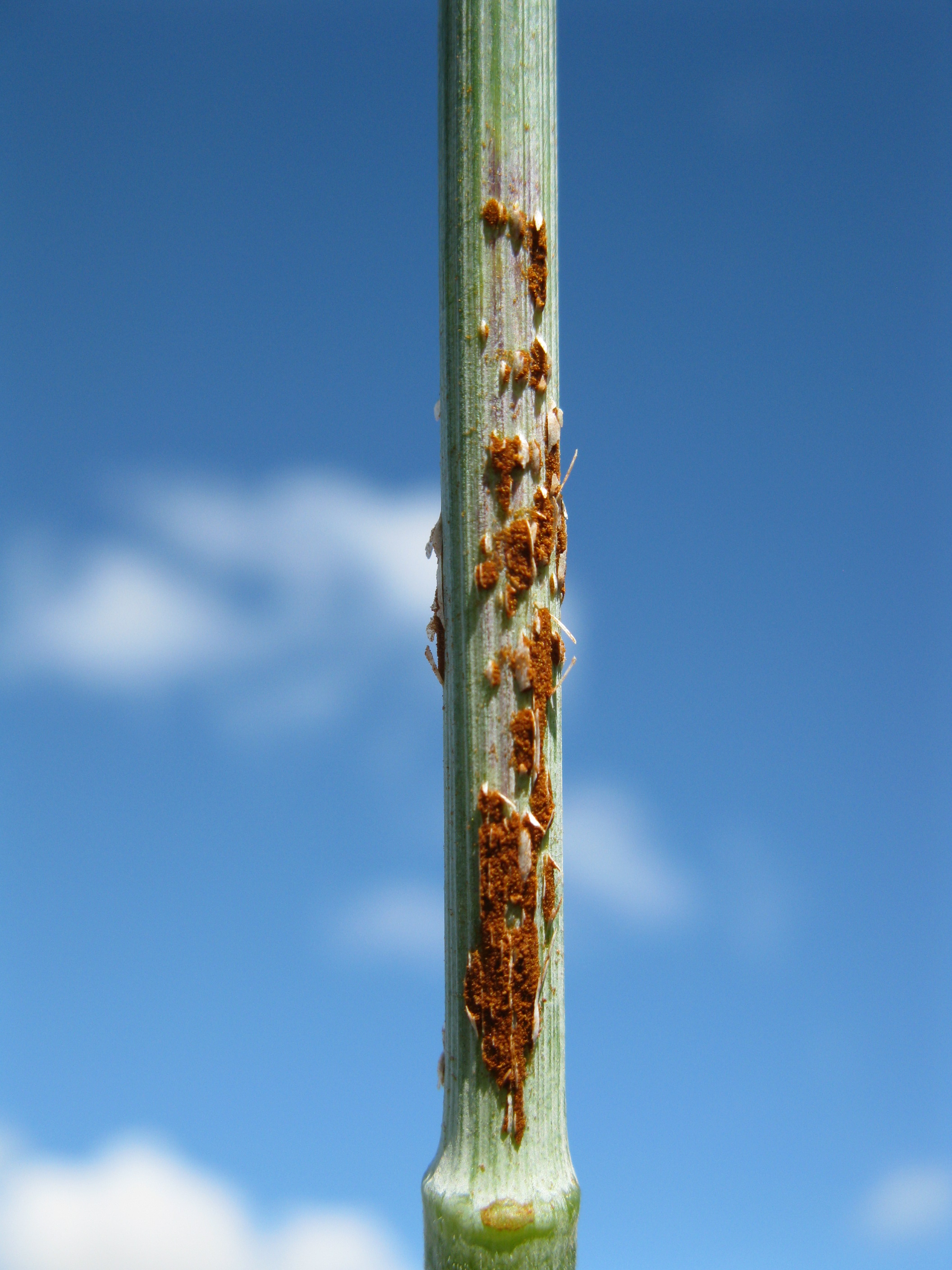Symptoms
Large pustules can occur on stems, leaf surfaces, leaf sheaths and heads. They are oval to elongated and are often surrounded by a characteristic torn margin. Pustules are full of reddish-brown spores which are easily dislodged. As the plant matures, black spores, which do not dislodge, are produced in the pustules.
Organism
Puccinia graminis f.sp. hordei (exotic strains). In Australia, Barley stem rust can be caused by exotic strains of Puccinia graminis f.sp. hordei or the endemic P. graminis f.sp. tritici, and P. graminis f.sp. secalis and hybrids between the two, which are referred to as f.sp. hordei because of their virulence to commercial barley.
Host range
Barley
Method of spread
The fungus survives the summer mainly on volunteer wheat, barley, triticale and some grasses including common wheat grass and barley grass. Wind spreads spores from these hosts to the new crop. Heavily infected volunteer plants in the autumn can be a source of rust for the new season’s barley crop. If these conditions are followed by a mild winter and a warm wet spring, the chances of a stem rust epidemic are high.
Confused with?
Leaf and stem rust may be confused, but they are distinguished by their colour and size. Leaf rust being lighter in colour, smaller and rounder than stem rust.
Conditions favouring disease
Disease development is favoured by high humidity and heavy dews. It is most rapid at temperatures between 15-30°C and markedly reduced by temperatures below 15°C and above 40°C. A mild winter and a warm wet spring heighten the chances of a stem rust epidemic. Stem rust can cause complete crop loss but suitable conditions for a severe outbreak are rare.
Where?
There are strains that exist in Australia, but there are a number that are still exotic to the region. If you find a previously resistant barley plant with symptom of stem rust a sample should be sent for testing.

Image 14. Barley stem rust is similar in appearance to Wheat stem rust pictured here.
Source: Grant Hollaway, Agriculture Victoria.


